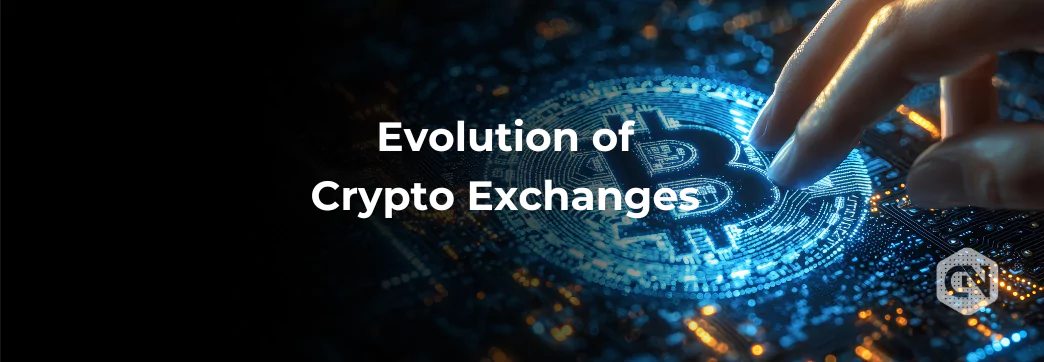The growth of cryptocurrency exchanges has transitioned from mere insecure beginnings to a defining platform of modern finance. As of mid 2025 bitcoin has a dominance of 56%, while the global market cap stays at a solid $3.85 trillion, revealing the importance of exchanges in this world of cryptocurrency.
The Early Days: Mt. Gox Sets the Stage
Starting operations in 2010, Mt. Gox gained immediate recognition as one of the earliest platforms to offer Bitcoin trading at scale. At the height of its popularity, the exchange is said to have accounted for over 70% of Bitcoin transactions worldwide, effectively becoming the backbone of Bitcoin’s early adoption.
The exchange’s downfall occurred in 2014 after it was hacked, resulting in a $450-million-dollar loss of 850,000 BTC. As shocking as this event was, it marked a shift in the narrative of the digital asset world. Investors’ trust was deeply affected—more importantly, it exposed a series of fundamental flaws in how exchanges at the time dealt with custody, security, and transparency.
The failure of Mt. Gox became a catalyst for the draw of attention towards regulation, accountability in custody, and the necessity of layered security approaches. This incident became the turning point in the development of safer and more resilient crypto exchange infrastructure.
Rise of Centralized Exchanges: Kraken, Binance, OKX, Huobi
After the early rise, several other exchanges entered the market and created their own customer bases. For instance, Kraken, founded in 2011, grew rapidly. By October 2024, it ranked among the top seven exchanges globally, boasting average daily volumes of $283 million (spot) and $217 million (derivatives), as per Investopedia.
In 2024, Kraken processed over $665 billion in trading volume, generated $1.5 billion in revenue, and achieved 99.9% uptime, marking it a standout in reliability and performance, revealed Kraken Blog.
Meanwhile, OKX achieved a record $188 billion monthly trading volume by February 2021, while Huobi processed over 1 trillion RMB (~USD 150 billion) by 2016, marking the rapid scaling of centralized exchanges.
These platforms introduced advanced features—spot trading, derivatives, margin, and more—but also concentrated systemic risk due to centralized control.
Decentralized Exchanges & The AMM Revolution
Consider Uniswap, which launched in November 2018 with a new idea called the Automated Market Maker (AMM). As October 2020 came around he’d already been processing $220 million per day in trades and facilitating wallet-to-wallet transactions peer-to-peer with no intermediaries. This innovation catalyzed the explosion of decentralized finance (DeFi) as it introduced unprecedented levels of transparency, liquidity provisioning, and user control to the ecosystem.
Crisis and Reform: The FTX Collapse
The 2022 collapse of FTX, previously the third-largest crypto exchange, ushered in the day’s most impactful bankruptcy shock. FTX’s collapse, marked by a deficit of $8 billion, became the talk of the town and was called “one of the most significant scandals since Enron.” 50Words
It wasn’t just that FTX’s collapse sent shock waves throughout the industry, however; it set off a flurry of regulatory actions. The rubble left in the wake of the collapse also helped create a trust deficit in the industry, with competitors to FTX (among them Binance) finding new ways to work within the changed environment and regulators tightening the grip even further.
Institutional Adoption & Regulation Momentum
Meanwhile, institutional interest is rising. For example, Investopedia’s data revealed that SIX (Swiss Exchange) is exploring a dedicated crypto venue to cater to institutional clients. Regulatory clarity—such as the EU’s Markets in Crypto-Assets (MiCA) regulation, fully applicable since late 2024—is propelling adoption by providing legal certainty for exchanges and service providers.
Barbara Pozdorovkina, Chief Growth Officer at LMAX Digital, underscores in the same Investopedia report :
“Regulatory clarity is unlocking institutional demand,” with platforms like LMAX now managing $30 billion daily in crypto turnover.
NFTs and Cross-Chain Payments: The New Frontier
Over the past few years, exchange activities have moved beyond mere trading to cover NFT marketplaces and cross-chain trading. Taking Binance NFT Marketplace as an example, it has managed over $1 billion in NFT trading since 2021.
Following that, the launch of Coinbase’s NFT platform in 2022 has enhanced the distinction between digital assets and cultural collectibles, which was already thin. On the payment front, KuCoin and OKX exchanges have adopted cross-chain swaps and stablecoin settlements, which makes transfers from Ethereum, BNB Chain, Solana, and even further chains effortless.
Developments like this show a new direction for the crypto world: exchanges are becoming not merely token marketplaces but all-in-one financial services that connect crypto, culture, and commerce.
Additionally, Exchanges enhance security with the inclusion of 2FA, multi-signature wallets, and biometric identification. It safeguards the users’ assets and information from misuse, hence making the trading platform more secure.
Today & Tomorrow: Innovations and Outlook
The next wave of exchanges will likely integrate best of both worlds:
- Hybrid models offering centralized liquidity with decentralized control.
- Advanced on-chain order books, Layer-2 scaling, and institutional-grade custody solutions.
Supporting data includes CoinGecko’s metric showing the total crypto market cap at $3.85 trillion, consolidated across thousands of tokens and over a thousand exchanges.
Conclusion
The crypto exchange journey is relatable to the progression of a baby taking its first wobbly steps to confidently running a marathon. Ever since Mt. Gox, the areas in crypto have seen better security, higher liquidity, and greater regulation. The outlook is good with decentralized finance, institutional investors, and regulations like MiCA.
These platforms, by becoming more developed and interconnected, position themselves as crucial infrastructure that bridges traditional finance with the new world of finance fueled by blockchain.
See less
